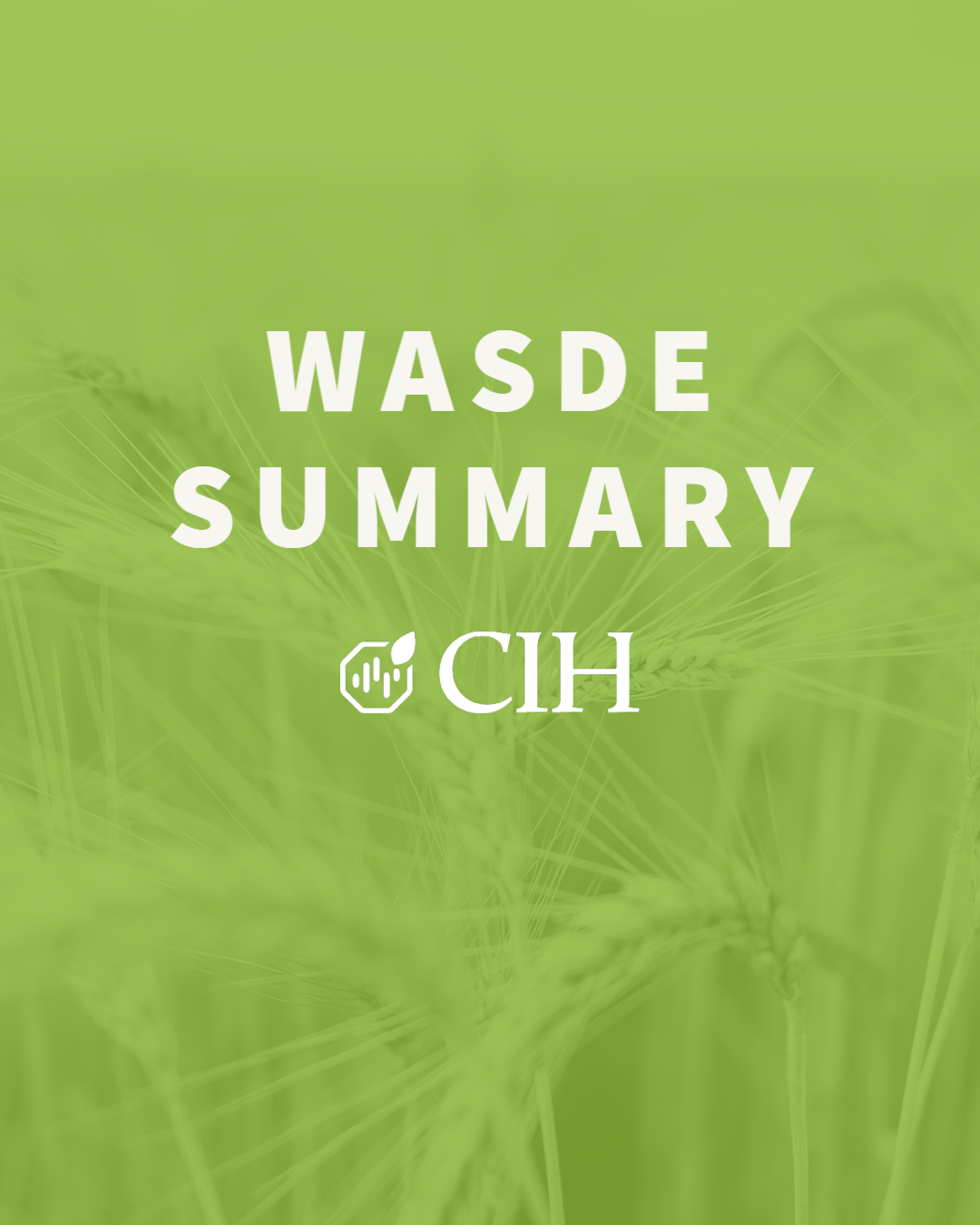
August 12, 2024
AUGUST 2024 WASDE REPORT SUMMARY AND NOTES:
Today’s WASDE report was relatively neutral for corn and wheat and surprisingly bearish for the soy complex. Yield estimates today were based on producer surveys and field surveys will be incorporated in September’s report. Today’s report also included an update on U.S. planted and harvested acres due to the incorporation of Farm Service Agency program participation data.
For corn, the domestic 2024/25 balance sheet called for larger supplies, larger exports, and smaller ending stocks. Corn production was pegged at 15.1 billion bushels, a slight increase from last month’s estimate by 47 million bushels. This was in-line with the average analyst pre-report estimates. Harvested acreage was reduced by 0.7 million acres while yield was increased by 2.1 bushels to 183.1 bushels per acre. This was above the average pre-report estimate of 182.1 bushels per acre but within the range of estimates (181.1 to 184.0 bushel range). Corn use was increased by 60 million bushels to 15 billion. Exports were increased by 75 million bushels due to U.S. price competitiveness. The global balance sheet called for lower production due to decreases in the EU, Serbia, and Russia. Global corn stocks were lowered by 1.5 million metric tons to 310.2 million. This was slightly below the average pre-report estimate of 311.2 million but within the range of estimates.
Corn exports increased from last month’s estimates despite pace of new crop sales remaining slow:

For soybeans, the domestic 2024/25 balance sheet called for higher production, larger exports, and higher ending stocks. Soybean production was increased by 154 million bushels on higher harvested area and higher yields. Harvested acres increased by 1 million acres from last month and yield increased 1.2 bushels per acre to 53.2 bushels per acre. While the yield was within the range of analysts’ estimates, total production of 4.589 billion bushels was above the range of estimates (4.396 to 4.537 billion range). The increase in acres, coupled with the increase in yield, created a decisively negative tone for the marketplace. Exports were increased by 25 million bushels from last month and crush was unchanged. Ending stocks were increased by 125 million bushels to 560 million. This was also above the range of analysts’ pre-report estimates (396 to 540 million range). The global balance sheet called for an increase in production due to increases in the U.S., Black Sea, and India. Global ending stocks were increased by 6.5 million metric tons to 134.3 million. Increases for China, Argentina, and Brazil outweighed a decrease in Brazil. Ending stocks were also above the range of analysts’ pre-report estimates (125.6 to 130.5 million range).
Harvested acres increased in August report for the first time the last decade, expected to remain below 2017/18, 2018/19, 2021/22, and 2022/23:

For wheat, the domestic 2024/25 balance sheet called for lower supplies, slightly higher domestic ruse, and smaller ending stocks. Supplies were slightly reduced on lower production as reduced harvested area was partially offset by an increase in yield. Pegged at 1.982 billion bushels, this was below the average pre-report estimate of 2.016 billion but within the range of estimates (1.982 to 2.035 billion). Domestic use was slightly increased from last month’s estimate. Domestic ending stocks were reduced to 828 million, below the average pre-report estimate of 860 million and slightly below the range of pre-report estimates (830 to 876 million range). The global wheat balance sheet called for an increase in supplies and consumption and slightly lower ending stocks. Supplies were increased on larger production in Ukraine, Kazakhstan, and Australia and in spite of lower EU production. Global ending stocks were lowered 0.6 million metric tons to 256.6 million, nearly identical to the average pre-report estimate. If realized, this would mark the lowest global ending stocks since 2015/16.
Global ending stocks reduced from last month:

Questions?
Contact us here